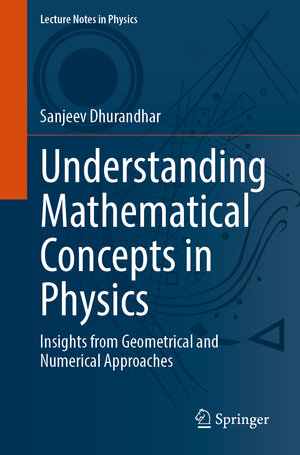
Understanding Mathematical Concepts in Physics
Insights from Geometrical and Numerical Approaches
von Sanjeev DhurandharModern mathematics has become an essential part of today’s physicist’s arsenal and this book covers several relevant such topics. The primary aim of this book is to present key mathematical concepts in an intuitive way with the help of geometrical and numerical methods - understanding is the key. Not all differential equations can be solved with standard techniques. Examples illustrate how geometrical insights and numerical methods are useful in understanding differential equations in general but are indispensable when extracting relevant information from equations that do not yield to standard methods.
Adopting a numerical approach to complex analysis it is shown that Cauchy’s theorem, the Cauchy integral formula, the residue theorem, etc. can be verified by performing hands-on computations with Python codes. Figures elucidate the concept of poles and essential singularities.
Further the book covers topology, Hilbert spaces, Fourier transforms (discussing how fast Fourier transform works), modern differential geometry, Lie groups and Lie algebras, probability and useful probability distributions, and statistical detection of signals. Novel features include: (i) Topology is introduced via the notion of continuity on the real line which then naturally leads to topological spaces. (ii) Data analysis in a differential geometric framework and a general description of χ2 discriminators in terms of vector bundles.
This book is targeted at physics graduate students and at theoretical (and possibly experimental) physicists. Apart from research students, this book is also useful to active physicists in their research and teaching.



